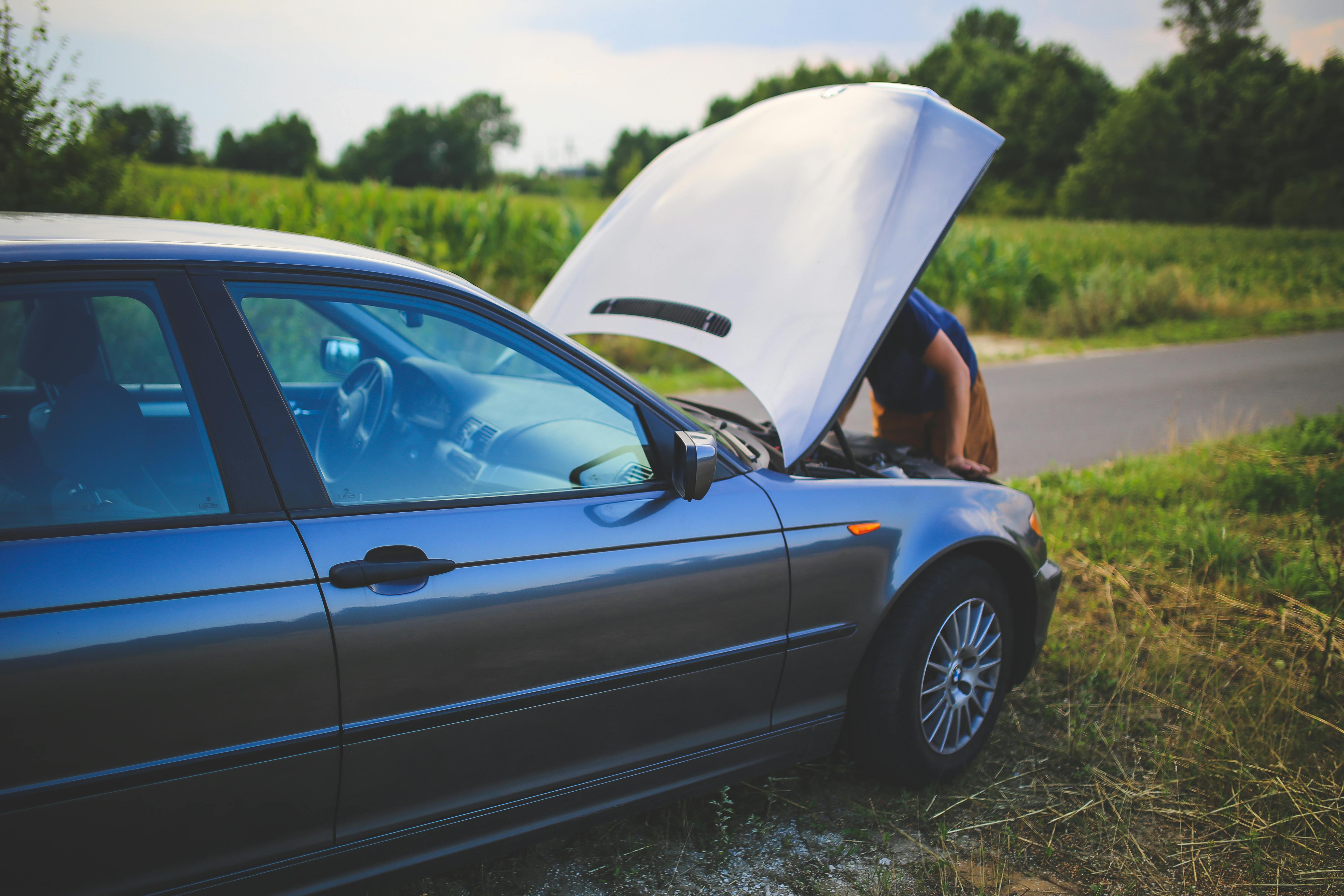What Is Breakdown Cover? Everything You Need to Know
If your vehicle suffers a mechanical fault, breakdown recovery can come to your aid. Read on for all you need to know about breakdown cover.
Updated:
When you purchase through links on our site, we may earn an affiliate commission. Here's how it works.

Few things are more exciting than a trip on the open road, and the best breakdown cover will prevent it from becoming memorable for the wrong reasons. Thankfully, roadside recovery will help if your vehicle has alternative plans.
In this guide, we explain what breakdown cover is, what it costs, and what it includes. Plus, we share a summary of the best European breakdown cover on the market.
Key takeaways
- Breakdown cover provides roadside assistance when you have problems with your car.
- Personal cover can be used by one driver across multiple vehicles.
- Vehicle cover protects multiple drivers of the same car or motorbike.
- Breakdown cover can’t be used to pay for repairs, which is why you should combine it with your car insurance.
What is breakdown cover?
Breakdown cover is insurance designed to provide recovery services should your vehicle experience mechanical problems. Policies vary in price and range of cover and can be tailored to your preferences, requirements, and budget.
Cars, motorbikes, and motorhomes can be expensive to maintain and repair, but even more so when they suffer a failure on the road. Robust breakdown insurance offers drivers peace of mind that they can call on a reliable breakdown recovery service should such a scenario occur.
Note that breakdown cover isn't the same as car insurance. While your car insurance should cover the cost of any repairs relating to accidents, theft, or vandalism, standard policies don't typically cover roadside assistance. However, this service can usually be added as an extra.
How does breakdown cover work?
Once a driver has selected a breakdown insurance policy tailored to their motoring needs, they'll pay a premium to guarantee coverage. This might be a one-off annual cost or spread over monthly payments. Drivers should note the phone number they should contact in an emergency and keep their insurance details in the vehicle.
Should you encounter a problem, contact the roadside assistance number. The provider will then dispatch a recovery vehicle and mechanic to your location.
The mechanic will inspect your vehicle and do their best to repair it at the scene. On-the-scene repairs are typically restricted to minor faults relating to battery issues, flat tyres, minor electrical or engine faults, or fuel problems.
For anything that can’t be mended at the roadside, arrangements can be made to tow your car to the nearest garage. You may be offered onward travel arrangements via public transport or the use of a hire car.
Depending on your policy, the costs associated with this may be included in your coverage.
Do I need breakdown cover?
Breakdown insurance is recommended if your vehicle is out of warranty or prone to mechanical tantrums. But even new cars can have their moments. So, unless you're a mechanic or have the confidence and tools to perform roadside repairs, you’ll need to take out some form of roadside assistance cover.
This is especially true if you're a frequent driver. Perhaps you commute to work every day or must drive long distances for business trips. Maybe you live in a remote area where help isn't likely to be available without an emergency backup.
If you spend significant time on the road, the peace of mind provided by breakdown cover can't be overstated. This is especially true if you travel with vulnerable passengers, such as young children or elderly relatives. Moreover, it needn't break the bank. Some banks even offer accounts that include breakdown recovery for a small monthly fee.

Benefits of breakdown cover
The best breakdown cover provides a wide range of key benefits designed to reduce the stress of unexpected vehicle breakdowns. Most offer 24/7 roadside assistance, ensuring you can call for help anytime.
Emergency repairs––including battery jump-starts, tyre changes, and mechanical tweaks––can often result in a quick fix at the roadside.
When that isn't possible, towing services can transport your car to a garage for a comprehensive check. And, when it comes to getting you where you need to be, onward travel assistance ensures you reach your destination even when your motor is no longer capable.
Depending on your policy, multiple vehicles and drivers can also be covered. This ensures that both you and your loved ones have help at hand.
Above all, breakdown cover enables you to save money on the services mentioned, the costs of which can quickly mount if paid separately.
Types of breakdown cover
Breakdown cover tends to fall into 2 main categories:
- Personal cover: Specific to 1 individual; it covers breakdowns in any vehicle in which the individual is a driver or passenger.
- Vehicle cover: Applies to a specific vehicle and covers anyone legally allowed to drive it.
Within the above 2 categories, breakdown cover incorporates the following options:
- Roadside assistance: A mechanic will attempt to fix your car at the roadside. If this isn't possible, they'll arrange to tow it to the nearest garage.
- Nationwide recovery: If your vehicle can’t be repaired, the providers will ensure you get home or to a UK destination of your choice.
- Home start: This covers you for repairs on––or only a few miles from––your property.
- Onward travel: If a roadside mechanic can't repair your car, onward travel will provide options like rental cars, public transport, or hotel stays.
- European cover: This covers you when driving through continental Europe. It's more expensive, but being stranded in a foreign country is no fun when you don't speak the language.
How much does breakdown cover cost?
The cost of UK breakdown cover depends on several factors, including:
- Level of coverage: While basic roadside assistance costs around £20-£40 per year, comprehensive plans can be £100+.
- Type of cover: Personal cover is more expensive than vehicle-specific policies because it covers multiple drivers.
- Provider reputation: There are various providers in the UK, and prices can differ depending on the company’s reputation.
- Extras: Additional benefits—including European cover, onward travel, and key replacement—increase the cost of breakdown cover.
What does breakdown cover include?
While breakdown cover will differ by policy, most will cover the following either as standard or as an additional service.
- 24/7 helpline (standard)
- Roadside repairs (standard)
- Tow service (standard)
- Onward travel (extra)
- Home start (extra)
- European cover (extra)
What does breakdown cover not include?
Breakdown cover is designed to be a first-response service, similar to home emergency cover. Its purpose is to find and fix the issue so you can continue your journey. It shouldn’t be used for long-term vehicle maintenance.
With that in mind, the following are usually excluded from breakdown cover (though some can be added as extras or may be included in your car insurance policy):
- Cost of parts or repairs
- Damage caused by a crash or accident
- Issues caused by poor maintenance
- Non-mechanical problems caused by driver error, such as lost keys or misfuelling
Breakdown insurance policies compared
Cover limit | Up to £1,500 for onward travelUp to £500 for emergency accommodation | Up to £1,000 for emergency accommodatio | Up to £500 for onward travelUp to £500 for emergency accommodation | Comprehensive: Up to £1,500 for onward travel; up to £500 for emergency accommodation Comprehensive Plus:Up to £4,200 for onward travel; up to £1,200 for emergency accommodation | Up to £500 for onward travel Up to £1,000 for emergency accommodation Total limit per claim period: £1,500 |
European coverage | Yes | Yes | Yes | Yes | Yes |
Countries covered | 44 | 38 | 42 | 48 | 40 |
24/7 | Yes | Yes | Yes | Yes | Yes |
helpline | |||||
Mobile app | Yes | Yes | No | Yes | Yes |
Our expert score | 4.4/5 | 4.3/5 | 4.3/5 | 4.5/5 | 4.4/5 |
How to choose the best breakdown cover provider
There are several factors to consider when weighing up your breakdown cover options, including:
Budget
Breakdown cover varies in price, and there are options to suit all budgets. Decide what you can afford and budget accordingly. Be wary of automatically picking the cheapest option, as it may not provide the coverage you need.
Dynamo, for example, offers some of the cheapest annual breakdown cover on the market. However, its £5,000 claim limit per policy term means it might not be suitable for drivers with older vehicles that are prone to regular breakdowns.
Coverage
You may only need local cover if you mainly use your car on the school run or to the shops. For longer commutes, opt for national cover. For any trips abroad, you'll need European coverage.
You can usually upgrade your coverage, but it can be tricky to downgrade it before the term ends. So, consider starting with the lowest coverage and upgrading if your plans change.
Response time
The worst time to realise that your roadside assistance company is renowned for slow service is when you’re parked on the hard shoulder. Research typical response times to see which companies perform well before deciding. Independent surveys are regularly conducted by consumer advocacy brands and can be found by searching online.
Customer reviews
Browse online reviews from existing customers and independent reviewers. Once you’ve assessed each provider’s customer service, value for money, and general performance, you’ll be in a good place to choose.
Exclusions and extras
Be clear about what’s standard in your policy and decide which extras might be helpful. Key replacement cover, legal cover, European cover, flat tyre replacement, and dead battery replacement are typical add-ons.
How to get cheaper breakdown cover
Want more affordable breakdown cover? Here’s what to keep in mind:
Your car insurance might help
You’ll likely have vehicle insurance that protects your car, motorbike, or motorhome. Contact your existing insurers and ask if they offer breakdown cover. It might be available as an add-on to your existing policy and cheaper than individual breakdown cover.
Banks offer incentivised accounts
It's also worth seeing if your bank offers current accounts with breakdown cover. These typically cost a monthly fee and tend to include phone insurance, home emergency, travel insurance, and breakdown recovery.
Compare providers
If you need a standalone breakdown cover, compare offers from several providers. Comparison sites can help, but it also pays to do your own research tailored to your specific needs.
Join a club
Consider joining a motoring club that offers discounts with partner breakdown recovery firms. Established in 1932, the Guild of Experienced Motorists (GEM) offers comprehensive and reasonably priced breakdown cover to its members. Motorhome owners who are part of the Caravan and Motorhome Club can enjoy discounted breakdown cover from Green Flag.
Don’t overinsure
Lastly, pay only for what you need. For example, don’t pay extra for European coverage if you don't plan to take your vehicle abroad.
FAQs
What happens if I break down and I don't have cover?
Above all, don't panic. Many recovery services offer ad-hoc assistance for non-members. Just don't expect it to be as quick or reasonably priced as if you had an existing policy.
Does it cost more to cover an older car?
Yes, some insurance providers charge more to cover an older car that’s more likely to require roadside repairs.
Are there limits on call-outs?
Some providers stipulate a maximum number of call-outs per year, but others offer an unlimited amount.
